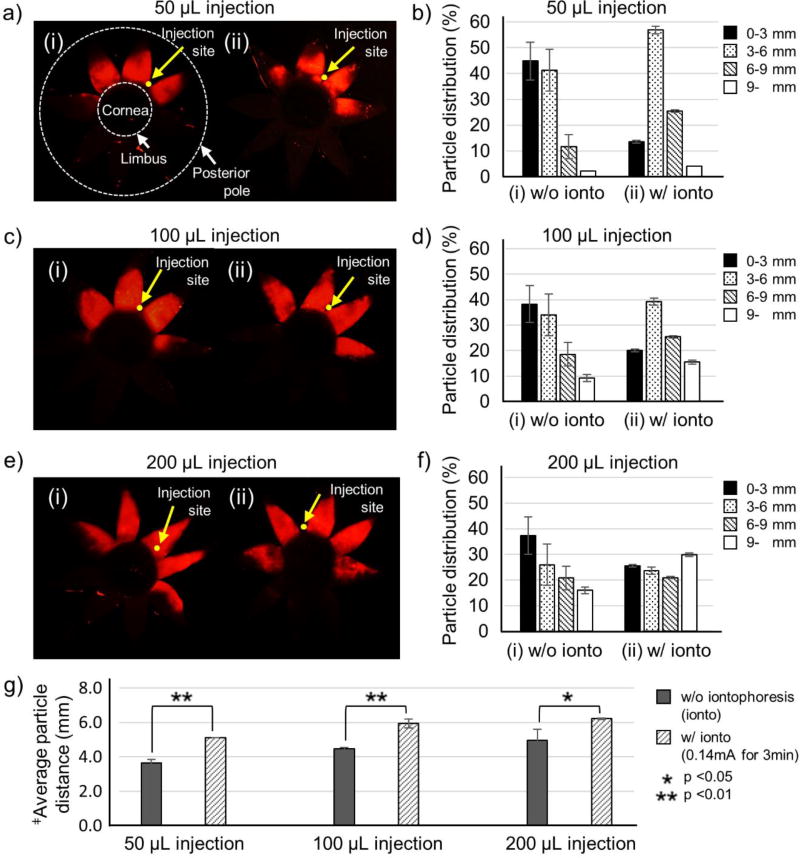Figure 2.
Effect of the iontophoretic targeting within the suprachoroidal space (SCS) at different SCS injection volumes. Representative fluorescence micrographs (a, c, e) and distributions of red-fluorescent nanoparticles in the SCS (b, d, f) after injection of nanoparticles in HBSS into the SCS of rabbit eyes ex vivo (i) without iontophoresis and (ii) with iontophoresis at 0.14 mA for 3 min. SCS injection volumes were 50 µL (a, b), 100 µL (c, d) and 150 µL (e, f). Fluorescence micrographs (a, c, e) show representative flat mounts of the eye after dissection with radial cuts from the posterior pole to the limbus to form 8 “petals.” Yellow arrows point to sites of injection into the SCS. The cornea is located in the center of the petals, and the posterior pole is at the tips of the petals. Two white dashed lines indicate the location of the limbus and the posterior pole. Average distance of nanoparticle transfer (g) was calculated based on the nanoparticle distribution. ‡Average particle distance (APD) (mm) = (1.5 mm × % of nanoparticles in 0–3 mm area) + (4.5 mm × % of nanoparticles in 3–6 mm area) + (7.5 mm × % of nanoparticles in 6–9 mm area) + (10.5 mm × % of nanoparticles in 9- mm area). Graphs (b, d, f, g) present average ± standard deviation based on 3 replicate samples.

